13+ Sample Artist Marketing Plan
-

Artist Marketing Plan Template
download now -
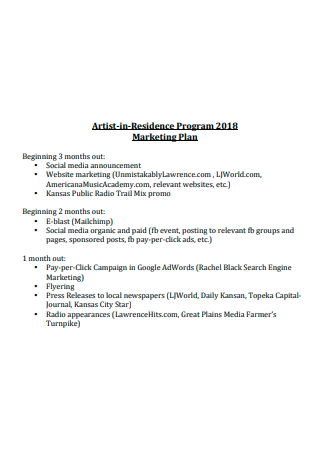
Artist in Residence Program Marketing Plan
download now -
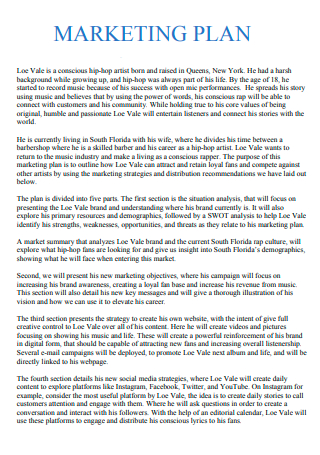
Artist Marketing Plan Example
download now -
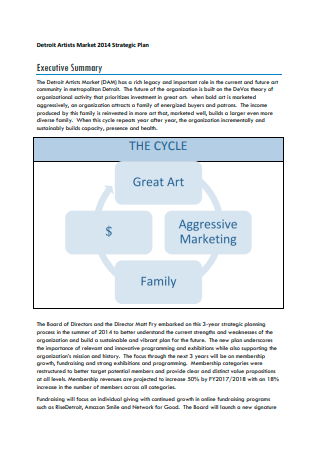
Artist Market Strategic Plan
download now -

Basic Artist Marketing Plan
download now -

Printable Artist Marketing Plan
download now -
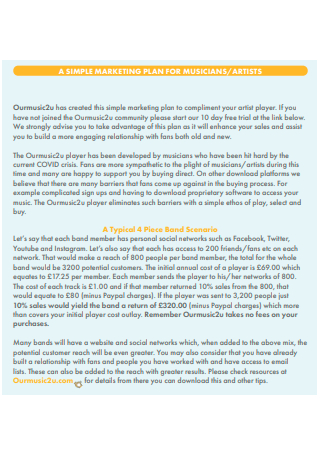
Simple Artist Marketing Plan
download now -

Artist For Womens Art Marketing Plan
download now -
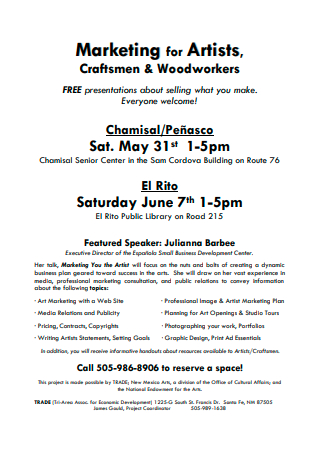
Artist Marketing Plan in PDF
download now -
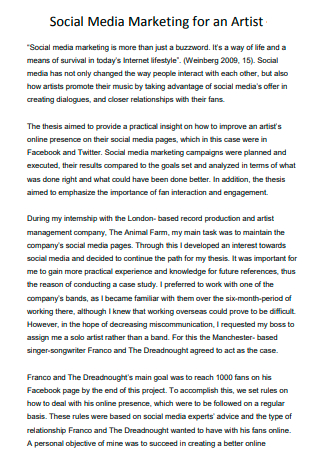
Social Media Marketing For an Artist Plan
download now -
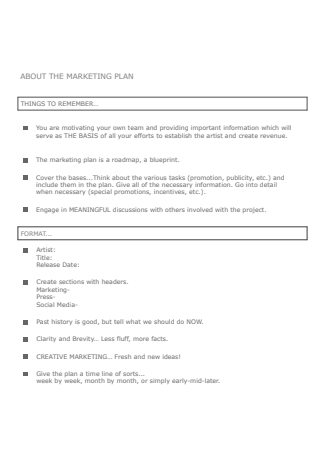
Artist Marketing Plan Format
download now -
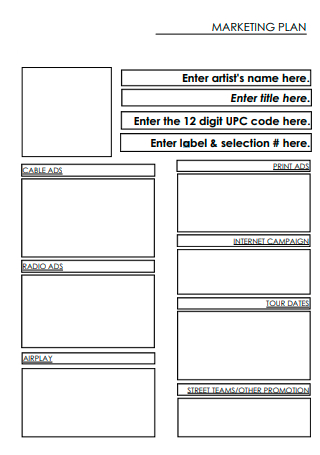
Sample Artist Marketing Plan
download now -

Standard Artist Marketing Plan
download now -

Formal Artist Marketing Plan
download now
FREE Artist Marketing Plan s to Download
13+ Sample Artist Marketing Plan
What Is an Artist Marketing Plan?
Marketing Ideas to Promote Artists
Advantages of Marketing Your Art
Steps On How to Make an Artist Marketing Plan
FAQS
What Are the Various Types of Artists?
What Are the Different Forms of Arts?
What Is the Best Way to Promote an Artist?
What Is an Artist Marketing Plan?
An artist marketing plan includes the concepts and tactics that will be used to promote an artist’s works as well as the artist themselves. Art is a broad phrase, and an artist does not limit himself to a single genre. An artist can be a singer, an actor, a poet, an illustrator, or any other work that has anything to do with art. A musician marketing plan, also known as a marketing plan for music artist, is one type of an artist marketing plan. Artists that already have their own brand have an artist agent to aid them with their marketing methods, but this article is also intended to help struggling and new artists.
Marketing an artist’s work isn’t solely for the artist’s advantage. People should support the arts of artists for a variety of reasons. According to this 2014 Reasons to Support Artist article, arts foster creativity and innovation while also supporting cultural prosperity. It also helps local businesses, which generates revenue for the country. Art is designed to shine and be appreciated and recognized because it can inspire both the artist and the spectators.
Marketing Ideas to Promote Artists
Being an artist can be a part-time or full-time job. You can set out to make money or merely do it for fun. However, simply being noticed in the market is not easy. There is a lot of competition, and the criticism of one’s work is typically harsh, so it takes a lot of courage for an artist to even begin. However, here are some promotional strategies you can use to promote your artwork.
Advantages of Marketing Your Art
If you’re looking for music artist marketing plan examples, art gallery marketing plan examples, or just an art marketing plan, you’ve come to the right place. You may be hesitant, thinking, “I could just wing it by reaching out to an audience and advertising my art.” “I don’t need a marketing plan.” To be honest, that is still a marketing plan. Whatever you do to promote your art is the same as marketing it; the difference is that it isn’t written down. There are undeniably numerous benefits to promoting them and here’s why you should start doing it too!
Steps On How to Make an Artist Marketing Plan
Making a marketing plan enables for planning and execution rather than making broad assumptions about the market’s current trend. To acquire traction in the industry, artists must rely on public opinion. That is why it is critical to develop a marketing strategy ahead of time, undertake preliminary research, and predict viewer reactions. And here’s how you can create that marketing plan.
Step 1: Identify Your Image
Identifying your individuality as an artist will help you identify your strengths and specialties. To ensure that your marketing strategy hits the proper audience, you must first understand what you believe your attributes are and how they vary from others just like a music artist that has a genre through which they normally advertise their work. And this is only after they have considered the quality of their voice, its compatibility to the music, as well as the image they want the public to see. Identifying oneself as an illustrator or artist entails identifying the style of art one has developed through time.
Step 2: Identify Your Market
Your work and your market are inextricably linked to your success as an artist. Take Banksy as an example; for those who are unfamiliar with his name, he is associated with mystery, and hence his art is also a mystery. That kind of clever tactic piques people’s curiosity, and as a result, he has a committed group of enthralled followers. Similarly, by understanding your market goal, you can allow yourself to make art that caters to them indirectly. People will become devoted to you if they feel your art speaks to them.
Step 3: Establishing Marketing Ideas
You must employ marketing ideas to appeal to the audience as part of this campaign. These concepts would have to address questions like, “How would you reach out to your target audience?” “, “How can your audience get in touch with you?” “, “How will you publicize your art?”. These marketing ideas must also be consistent with the image you’ve created for yourself to catch the audience’s attention.”
Step 4: The Art
Establishing which work you will display in this specific campaign or time period is critical since here is where all of your strategy will revolve. The image of your art, as well as its target market, will have an impact on the marketing strategies you employ. In certain larger industries, you may need the approval of higher-ups on what art you may provide to your audience. To prevent disappointing your audience, it is critical to have already made your art before promoting it.
Step 5: Dates
Setting release dates for your art, such as an album for a musician, is also a crucial component in promoting them. It generates expectations and encourages people’s curiosity. As a result, it really helps to reach a larger audience because there is more room for preparation and word to spread around.
FAQS
What Are the Various Types of Artists?
There are several types of artists all throughout the world. Photographers, painters, illustrators, digital artists, or graphic designers, and even sculptors are examples of imagery and drawing artists. There are also artists active in cinema and acting, such as theater actors, movie and television actors, and so on. We also have arts that require a more professional job, such as architecture and interior design. Musicians, poets, and writers are all considered artists too.
What Are the Different Forms of Arts?
There are many distinct types of arts, and they typically differ from one culture to another. Painting, drawing, illustrating, and sculpting are some of the best examples of arts. Poetry, prose, sonnets, and other forms of literature are also involved in the arts. Theater, cinema, and music are among well-known forms of art. There may be more that is unique in one location throughout the world.
What Is the Best Way to Promote an Artist?
Everyone has their own best manner of promoting an artist, and it will be completely different for everyone else. However, one of the best methods to promote an artist is to let their work speak for itself. By allowing their art to express its purpose and the artist’s creativity behind it. Marketing does not always require lengthy explanations; it might just involve an artwork, the audience’s perspective, and then the artist.
It takes a lot to make art, and it’s not always as simple as picking up a pencil and a sketching pad. Maybe you’d have to look up “how to promote local artists” or “artist marketing plan samples” on the internet, but that’s okay because you’re simply looking out for your craft and want some exposure. You need a little assistance, and you’ve come to the right place. You may begin promoting your art by downloading the free artist marketing strategy pdf above!
